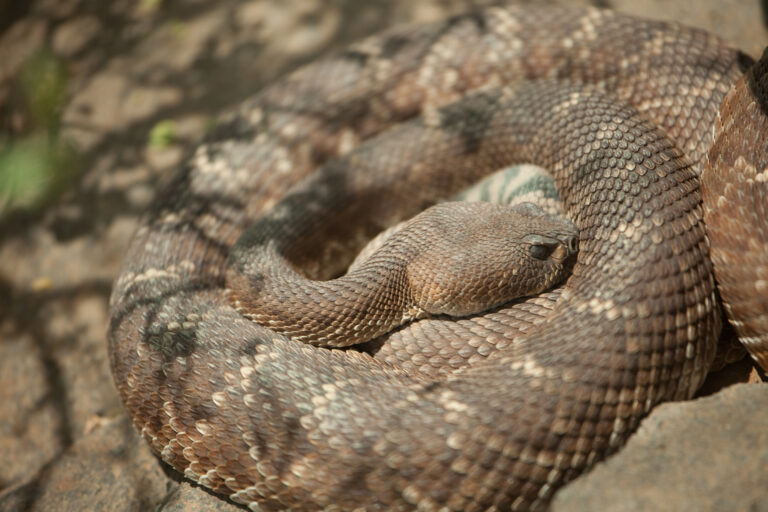As the weather warms up, it’s crucial to remain vigilant and mindful of rattlesnakes emerging from hibernation, especially in areas prone to their habitat. Stay cautious and observant of your surroundings when spending time outdoors to prevent any unexpected encounters with these venomous reptiles.
What Employees Can Do:
• Be aware of your surrounding environment.
• If you encounter any snake, do NOT handle it. Leave the snake alone and notify other workers of the snake’s location and description.
• It is important that if employees are not in imminent danger that we do not harm the snake. Notify your supervisor, who will then inform a environmental rep who will then safely contain the snake and relocate it away from the job.
- • Do NOT disregard the bites of small or juvenile venomous snakes. They are born equipped with venom that is just as potent as adult venomous snakes.
- • Wear appropriate PPE and protective clothing such as snake-proof boots, leather gloves, and long pants, & snake gators when working outdoors.
- • Wear leather gloves and use tools to move brush piles, leaves, wood, metal, and debris by lifting the far side toward you as this creates a barrier. between the worker and any venomous snakes.
- • Be aware that snakes are more active in warm weather and at night.
Did you know?
In the United States, the deadliest snake for humans is the Eastern Diamondback Rattlesnake. Although they are the deadliest, they typically only attack if they feel threatened and can strike a victim at up to one third of their body length.
Symptoms of Rattlesnake Bite
-
- • Pain/burning sensation at the bite site that progresses away from the bite site.
- • Increased bleeding and bruising
- • Dizziness
- • Blurry Vision
- • Increased sweating
- • Difficulty breathing
- • Decreased consciousness
- • Paralysis
- • Cardiovascular system collapse
First Aid
Workers should take these steps if a snake bites them:
- • Seek medical attention as soon as possible (dial 911 or call local Emergency Medical Services [EMS]).
- • Antivenom is the treatment for serious snake envenomation. The sooner antivenom can be started, the sooner irreversible damage from venom can be stopped.
- • Driving oneself to the hospital is not advised because people with snakebites can become dizzy or pass out.
- • Take a photograph of the snake from a safe distance if possible. Identifying the snake can help with treatment of the snakebite.
- • Keep calm.
- • Inform your supervisor.
- • Apply first aid while waiting for EMS staff to get you to the hospital.
- • Lay or sit down with the bite in a neutral position of comfort.
- • Remove rings and watches before swelling starts.
- • Wash the bite with soap and water.
- • Cover the bite with a clean, dry dressing.
- • Mark the leading edge of tenderness/swelling on skin & write the time alongside it.
Do NOT do any of the following:
• Do not pick up the snake or try to trap it. NEVER handle a venomous snake, not even a dead one or its decapitated head.
• Do not wait for symptoms to appear if bitten, get medical help right away.
• Do not apply a tourniquet.
• Do not slash the wound with a knife or cut it in any way.
• Do not try to suck out the venom.
• Do not apply ice or immerse the wound in water.
• Do not drink alcohol as a painkiller.
• Do not take pain relievers (such as aspirin, ibuprofen, naproxen).
• Do not apply electric shock or folk therapies.




